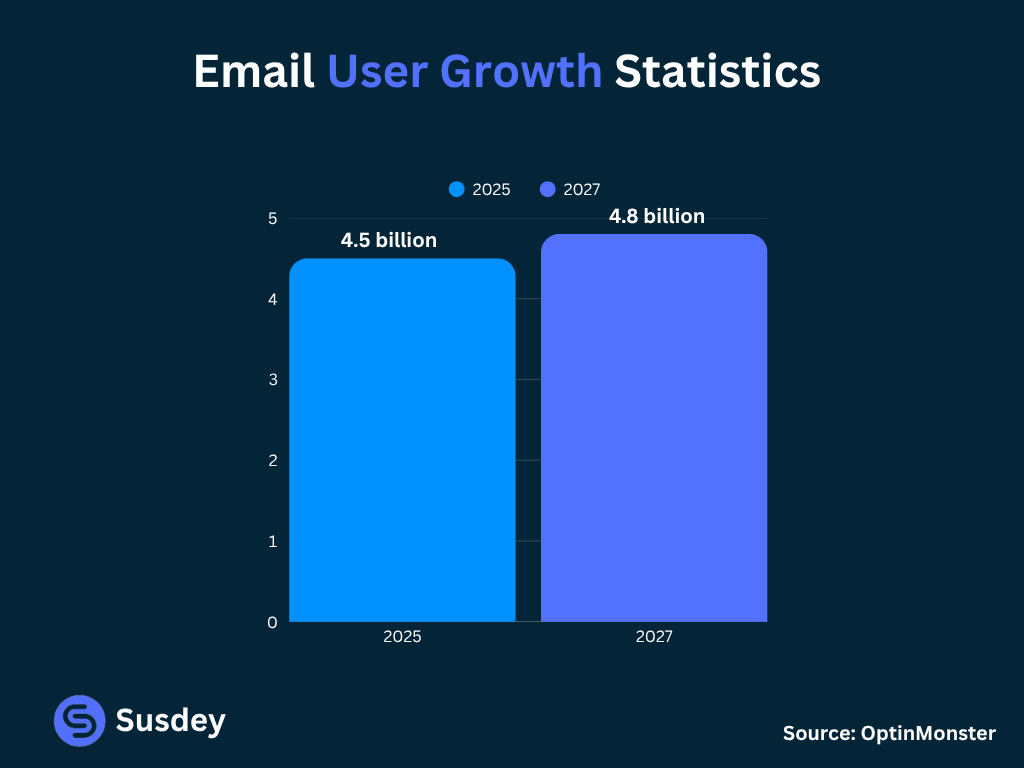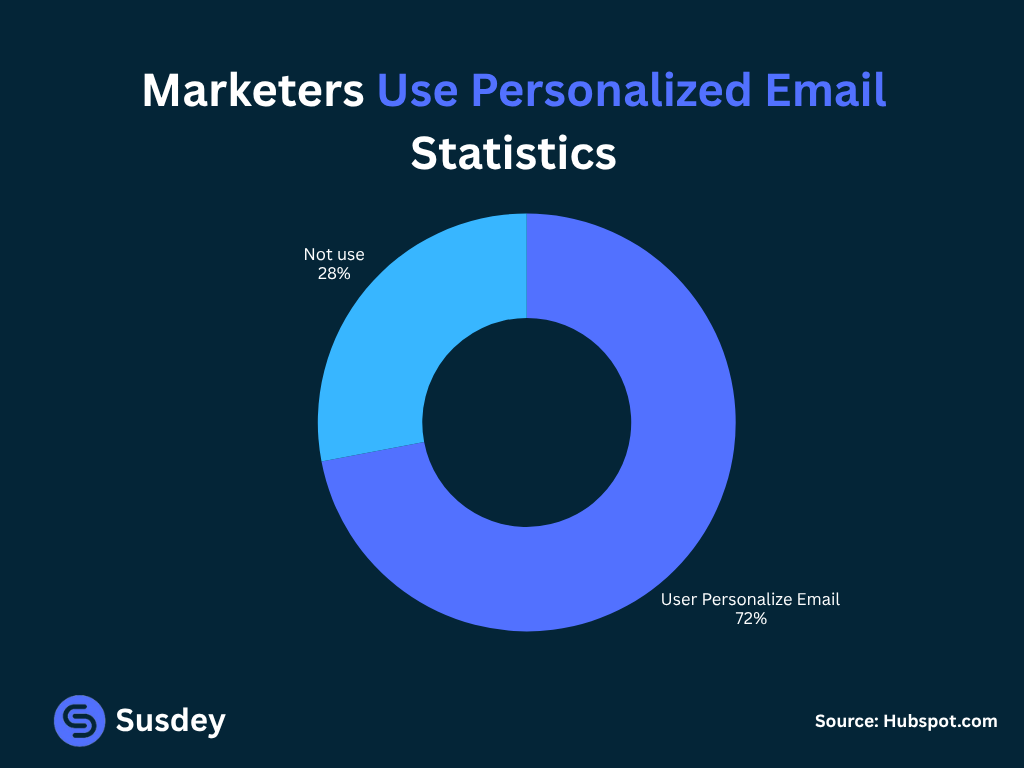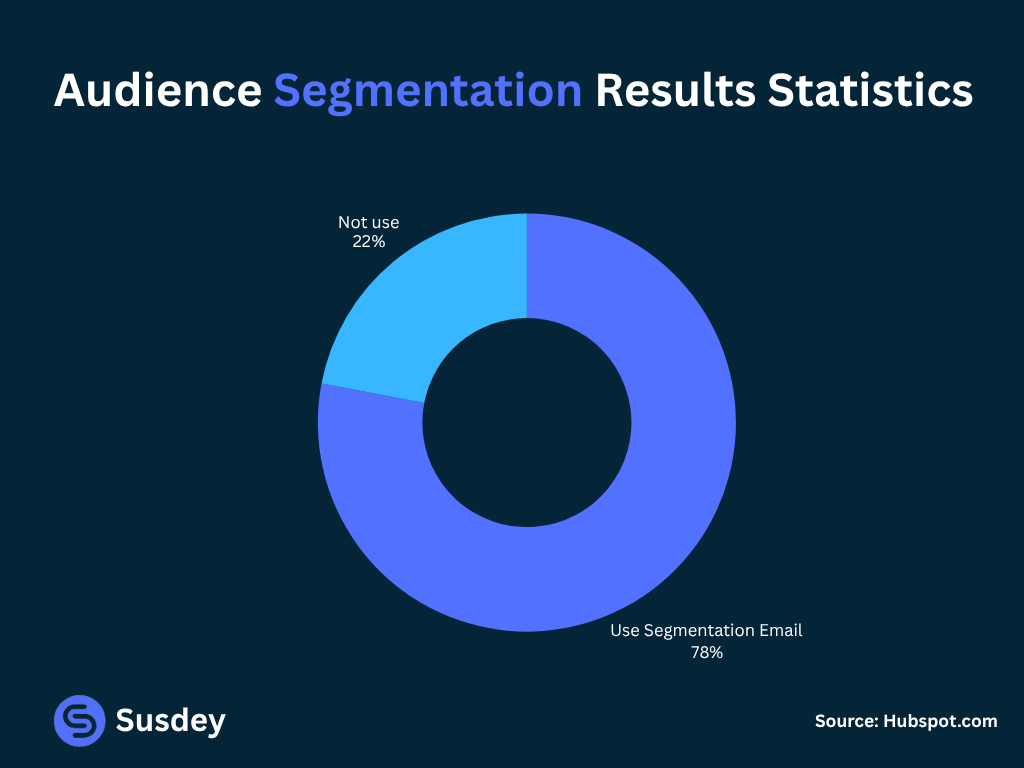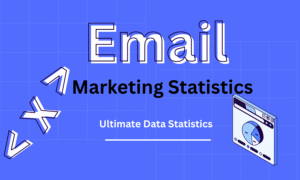Email marketing remains one of the most effective tools for businesses to reach and engage their audience. It consistently delivers strong returns on investment by driving conversions and maintaining customer relationships. Understanding key email marketing statistics helps marketers refine their strategies to increase open rates, click-throughs, and overall campaign success.
Recent data shows trends in email usage, delivery rates, and consumer behavior that provide clear guidance on what works and what doesn’t. Knowing these numbers allows marketers to stay competitive and optimize their efforts in real time.
Marketers who focus on metrics like bounce rates, engagement, and mobile email performance can see measurable improvements. These statistics reveal how small changes in email content and timing lead to better results for both B2B and B2C campaigns.
Top Pick
- Mobile email usage accounts for over 50% of all email opens in 20225
- The average of email open rate across all sectors is about 17.8%
- Average CTRs hover around 2-5%
- Businesses typically earn about $42 for every $1 spent on email campaigns
- As of 2025, approximately 4.5 billion people use email.
- The number of email users are expected to reach 4.8 billion by 2027
Key Email Marketing Statistics
Email marketing remains a powerful tool for businesses worldwide, showing steady growth and measurable results. Important metrics include global usage, open rates, click-through rates, and conversion data, all critical for evaluating campaign success.
Global Usage Trends
Email marketing continues to expand globally, with billions of emails sent daily. Its use spans various industries, adapting to mobile devices where a growing number of users check email on smartphones and tablets.
By 2025, mobile email usage accounts for over 50% of all email opens. Marketers prioritize mobile-friendly designs and personalized content to meet this demand. Additionally, industries like retail, finance, and healthcare show strong email adoption rates.

The global reach of email marketing also benefits from growing internet access. Emerging markets contribute to increased user numbers, making email a universal channel for outreach.
Open Rates Benchmarks
Open rates vary significantly depending on the industry, but the average across all sectors is about 17.8%. This means less than one in five recipients read the email after it arrives.
Some industries, like government and nonprofits, often see higher open rates, sometimes above 25%. In contrast, sectors like marketing services report lower averages.
Time and subject lines greatly impact open rates. Emails sent on Tuesdays or Thursdays tend to perform better. Short, clear subject lines focusing on value or curiosity increase open likelihood.
Click-Through Rates
Click-through rates (CTR) measure how many opened emails lead to a click on a link or call to action. Average CTRs hover around 2-5%, highlighting the challenge of converting interest into action.
Emails with clear, direct calls to action and mobile-optimized links see better engagement. Personalization boosts CTR by making content more relevant to recipients.
Interactive elements, such as buttons instead of text links, can also improve clicks. Marketers continuously test designs and content to find the most effective combinations.
Conversion Rate Data
Conversion rates track how many recipients complete a desired action after clicking, such as a purchase or sign-up. Typical email conversion rates vary but usually fall between 1-5%.
High-performing campaigns often use segmented lists to target specific audiences. Using behavioral data like previous purchases raises conversion chances.
Automated email sequences, like welcome series or cart abandonment reminders, significantly improve conversions. Tracking conversion rates helps marketers allocate resources effectively and refine strategies.
Email Marketing Effectiveness
Email marketing consistently delivers strong results in key areas, including return on investment, user engagement, and audience growth. These factors make it a reliable tool for businesses seeking to enhance their marketing reach and performance.
ROI Insights
Email marketing offers one of the highest returns on investment among digital marketing channels. Studies show that businesses typically earn about $42 for every $1 spent on email campaigns. This makes email marketing especially cost-effective for small and medium-sized businesses.
The high ROI comes from the low costs associated with sending emails compared to other advertising methods. Email also allows for targeted messages, improving the chances of customer response and sales.
Engagement Metrics
Emails achieve higher engagement rates than many digital channels. The average conversion rate for email marketing is approximately 6.5%, which is higher than social media platforms. Open rates and click-through rates vary by industry but often remain strong due to personalized content.
Effective emails include clear calls to action and relevant offers. Tracking engagement helps marketers adjust their campaigns to increase user interaction and conversion.
List Growth Statistics
The number of email users worldwide is growing steadily. As of 2025, approximately 4.5 billion people use email, and this number is expected to reach 4.8 billion by 2027. A growing audience means a larger potential reach for email marketers.

Maintaining a clean, permission-based email list is important. Marketers focus on growing their lists through sign-ups, promotions, and providing value to keep subscribers engaged and reduce unsubscribes.
Segmentation and Personalization Data
Segmentation and personalization are crucial for improving the effectiveness of email marketing campaigns. Proper use of these techniques can lead to better engagement, higher revenue, and more precise targeting of audiences.
Personalized Campaign Performance
Personalized emails perform significantly better than generic ones. Around 72% of marketers use message personalization to increase engagement. Personalization can include using the recipient’s name, tailoring content based on past behavior, or suggesting products that fit their interests.

Emails with personalized subject lines tend to have higher open rates. They also generate more clicks and conversions. Automation helps deliver these tailored messages efficiently, with 71% of marketers using automated emails combined with personalization.
Personalized campaigns help reduce unsubscribe rates and spam complaints. This creates a better experience for the subscriber and improves overall campaign ROI.
Audience Segmentation Results
Segmenting email lists drives major improvements in campaign results. About 78% of marketers use segmentation to target their audience more accurately.

According to data, campaigns that use segmentation can increase revenue by up to 760%. This is because messages are more relevant to each group’s interests and needs.
Revenue share from segmented email accounts for about 25% of total email-generated revenue. Segmentation improves open rates, click-through rates, and conversion rates while reducing spam complaints. This makes segmentation a vital strategy for email marketing success.
Key benefits of audience segmentation include:
- Higher engagement rates
- Improved message relevance
- Increased sales and revenue
- Lower unsubscribe rates
- Device and Platform Insights
Email interactions vary widely depending on the device and platform used. Understanding these differences helps marketers tailor campaigns for better engagement and performance. Device types impact open rates, user behavior, and technical challenges in delivery.
Mobile vs Desktop Statistics
Mobile devices account for 26-78% of all email opens. This high percentage means emails must be optimized for small screens and touch navigation. Mobile users tend to open emails quickly and often on the go.
Desktop email opens still matter, especially for detailed reading and clicking links. Desktop users are more likely to engage with longer content or perform complex tasks like filling out forms.
Campaigns that ignore mobile optimization risk losing most of their audience. Responsive design and concise subject lines perform better on mobile devices.
Email Client Usage
The most popular email clients include Gmail, Apple Mail, and Outlook. Gmail holds a large share, especially among mobile and web users. Apple Mail is common on iOS and macOS devices, while Outlook is dominant in many professional settings.
Each client renders emails differently, affecting how designs appear. For example, Outlook often has stricter formatting requirements. Marketers should test emails across multiple clients to avoid display issues.
Understanding client preferences also helps in segmenting audiences and customizing email content.
Deliverability Rates
Deliverability depends on sender reputation, content quality, and technical setup, like SPF and DKIM records. Industry benchmarks show around 85-90% deliverability for well-maintained lists.
Mobile networks may cause delays or drops in email delivery, impacting open rates on mobile devices. Spam filters vary by platform, so content filtering on Gmail differs from Outlook’s approach.
Maintaining clean email lists and monitoring bounce rates is crucial. High engagement improves inbox placement, while spam complaints reduce deliverability.
Trends by Industry
Email marketing performance varies widely across industries. Different sectors see distinct open rates, click-through rates, and conversion patterns. These variations shape how marketers tailor their campaigns to meet industry-specific behaviors and expectations.
E-commerce Benchmarks
E-commerce emails typically see higher engagement than many other sectors. The average open rate sits around 17-28%, with click-through rates near 2-3%. Promotional emails, especially those tied to sales or new products, tend to perform best.
Personalization plays a crucial role. Emails with personalized product recommendations can increase click rates by up to 10%. Automation, such as cart abandonment reminders, also drives conversions efficiently.
Popular tactics include limited-time offers and loyalty rewards. They help keep customers active and encourage repeat purchases. Timely, relevant content directly impacts e-commerce email success.
B2B Email Metrics
B2B email marketing generally reports lower open rates compared to e-commerce, averaging about 15-18%. However, click-through rates can be higher due to the targeted nature of business communications.
Content in B2B emails often focuses on education and relationship-building. Whitepapers, case studies, and webinars are common offers that engage recipients deeply.
Frequency matters here; too many emails can reduce engagement. Marketers achieve better results with quality over quantity. Clear calls to action and relevant content improve performance in this sector.
Nonprofit Email Performance
Nonprofit emails often experience open rates near 20%, which is higher than some commercial industries. This is partly due to the emotional connection supporters feel toward the cause.
Fundraising campaigns and event invitations are key drivers of engagement. Personalized thank-you messages also boost retention and donor loyalty.
Urgency and transparency in messaging encourage donations. Clear, concise appeals supported by data perform best. Nonprofits benefit from segmenting their lists to target different supporter groups effectively.
Consumer Behavior in Email Marketing
Consumers respond differently to how often they receive emails, when those emails are sent, and how they feel about unsubscribing. Understanding these patterns helps marketers improve engagement and reduce list churn.
Preferred Email Frequency
Most consumers prefer receiving emails between once a week and twice a month. Sending emails too often can overwhelm subscribers, causing annoyance and potential unsubscribes.
Research shows that about 40% of users like weekly emails. A smaller group, around 25%, is comfortable with emails twice a week. Email frequency that matches these preferences leads to higher open and click rates.
Marketers should test frequency carefully. Sending too few emails risks losing relevance. On the other hand, sending too many can hurt their brand’s reputation and reduce campaign effectiveness.
Unsubscribe Rates
Unsubscribe rates vary by industry and email content quality, but generally stay below 0.5% per email sent.
High unsubscribe rates often indicate problems such as irrelevant content, too many emails, or poor targeting.
It is important to track unsubscribe reasons when possible. Many users leave feedback citing frequency or lack of value as their reasons.
Reducing unsubscribe rates involves improving personalization and segmenting lists to deliver more relevant content to recipients.
Timing and Sending Statistics
Email timing impacts open and engagement rates significantly. Studies find that emails sent on Tuesdays and Thursdays between 10 a.m. and 2 p.m. often perform best.
Weekend emails tend to have lower open rates but can work well for certain industries, like entertainment or leisure.
Mobile users check email frequently throughout the day, so optimizing emails for both desktop and mobile devices is essential.
Marketers who use time zone sending see improved results by delivering emails when recipients are most active.
Future Outlook and Emerging Trends
Email marketing is expected to continue growing steadily in the coming years. By the end of 2025, the number of email users worldwide is projected to reach around 4.6 billion. This growth supports the ongoing importance of email as a marketing tool.
Personalization will play a bigger role. Marketers use data to tailor emails to individual preferences, which helps increase engagement. Automation and AI tools are also becoming more common. These technologies allow marketers to send timely, relevant messages without manual effort.
Mobile email usage keeps rising as well. More people check emails on smartphones, which makes mobile optimization crucial. Brands that design emails for mobile screens tend to see better performance.
Here are key trends shaping the future:
- Increased use of AI and machine learning to improve targeting and predict customer behavior.
- Stronger focus on data privacy due to new regulations and consumer concerns.
- Integration of interactive elements like polls or videos within emails.
- Greater emphasis on ROI measurement using advanced analytics to track campaign success.
- These trends reflect a move toward smarter, more user-focused email marketing that aims to meet customer needs efficiently.
